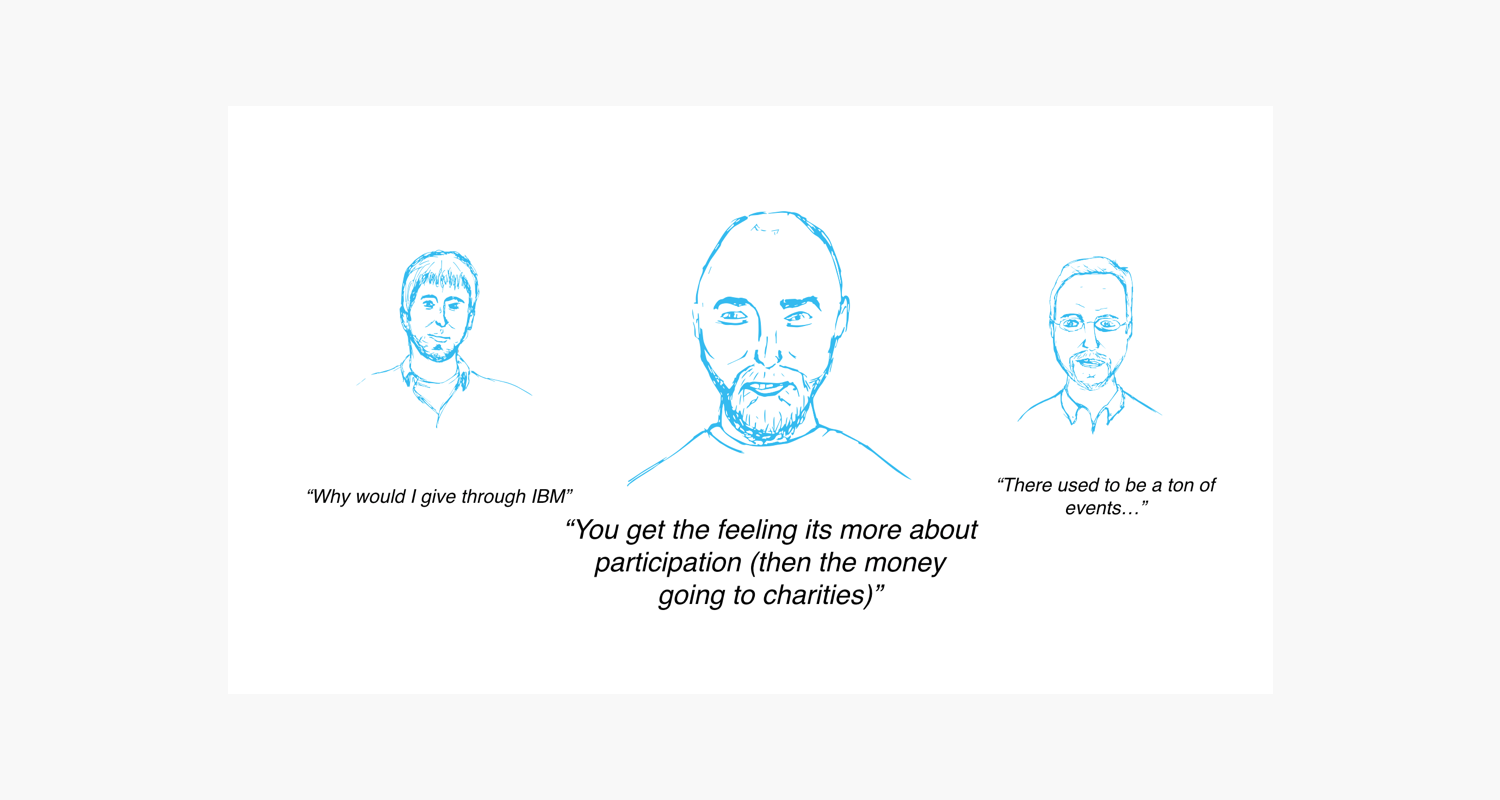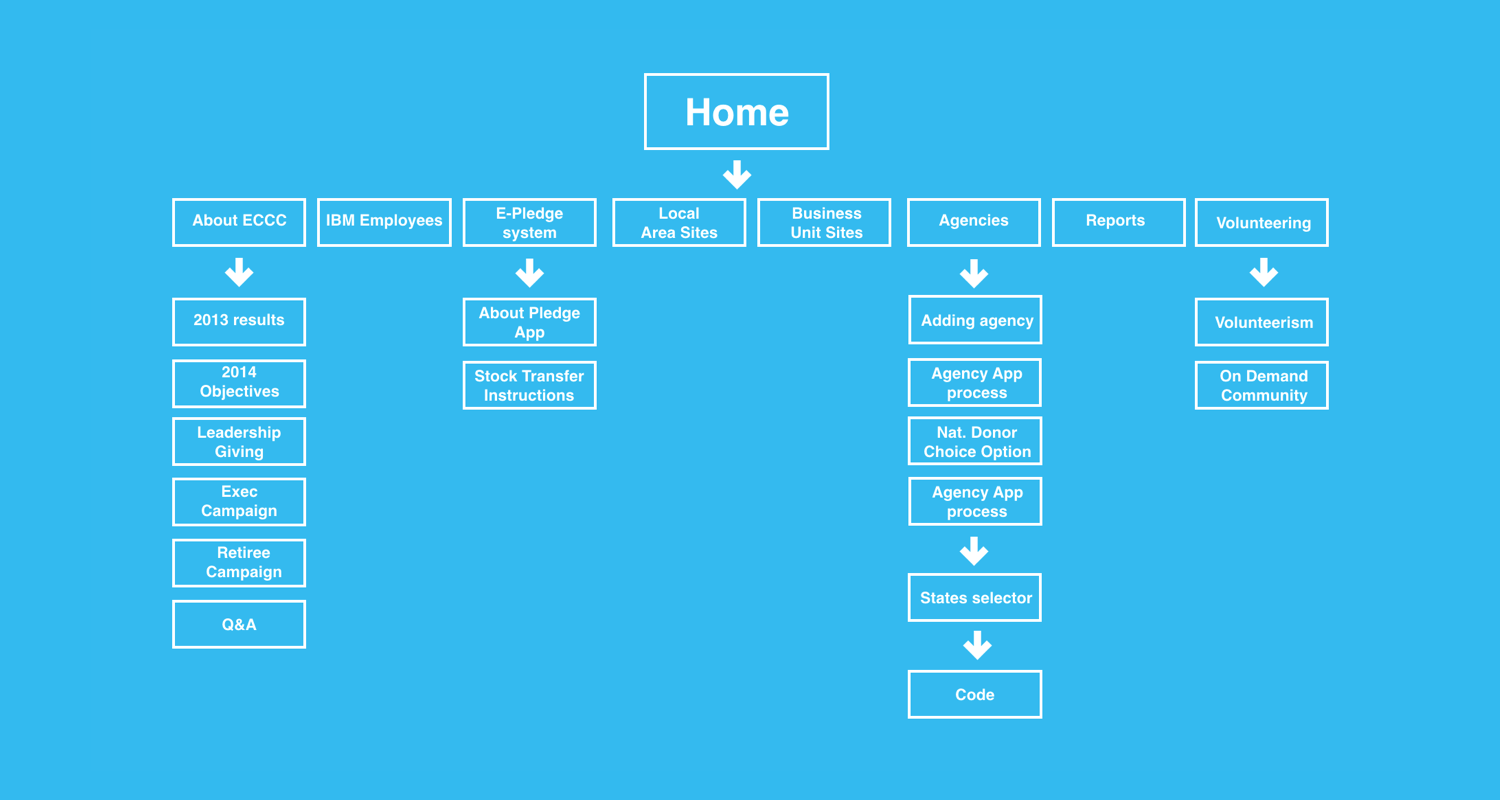
IBM internal org was extremely segmented and employees within the organization often operated more competitively for company resources to achieve team milestones rather than symbiotically by sharing knowledge and resources between groups to achieve the larger goals of the company. One of the priorities of the executive team was to improve the culture among all of its orgs, promote knowledge sharing, and instill a practice of open communication between employees and their teams. Another priority was to increase the annual employee giving pledge; most employees who gave did not know the many benefits of doing so through IBM simply because the experience of doing so was poor.
This was the first project of the internship and allowed all thirteen interns to work together to tackle the problem on a 2-week timeline. We separated into groups based on skill set to conduct interviews, analyze data, further define the problem, learn about our target users, validate our ideas, and implement the design solution in a working demo.
 Common user responses from interviews.
Common user responses from interviews.I took ownership of mapping out the information architecture and the user flow for the product. Additionally, I assumed a central role in interpreting the interview data to define the problem statement and high level goals. Sometimes maintaining clear communication among all of the team members was difficult, so I helped to facilitate that process by creating personas and journey maps, and leading summary discussions at the end of the day to discuss learnings.
 I desgined this information architecture for the project and it was later adopted in the final design.
I desgined this information architecture for the project and it was later adopted in the final design. By starting with our users and having a bias to action, my intern class succeeded in delivering a solution that aligned with the goals of the stakeholders (the executive team) that also served the wants and needs of the employees. The leadership team who we presented to was impressed with the quality of our live demo and that we were able to dive deep into the complex issue to find a quality solution under such tight constraints. Parts of the proposed solution were adopted for use internally, including the information architecture I created.
